News
Visiting an aviation museum: Checking out fighter jets, engine & more
This was quite the little gem of a museum. Not particularly large, but cramped with stuff and a very nice lineup of some interesting planes.
BHPian Jeroen recently shared this with other enthusiasts.
Mrs D wanted to visit one of her period costuming events in Coventry, UK. So we grabbed a bag, threw it in the Jaguar and headed out to Hoek of Holland to take the night Stenaline ferry to Harwich. Very smooth sailing and hardly any people on the ferry. On Friday morning we passed immigration at about 07.00 hours and with a quick coffee stop along the way, we found ourselves at the venue at around 10.00 am.
I dropped my wife off and headed out a couple of miles up the road to visit the Midland Air Museum.

There are endless numbers of musea in the UK on any topic under the sun you can think of. There are certainly a huge number of aviation-related museums. We lived in the UK, we had our second home in the year for decades and I have toured all over the UK in many different classic cars. But I still have not visited all aviation museums.
As it turns out, this was quite the little gem of a museum. Not particularly large, but cramped with stuff and a very nice lineup of some interesting planes. Including a Vulcan, where you can visit the cockpit. More on the later.
The museum incorporates the Sir Frank Whittle Jet Heritage Centre. If you want some more background information on Frank Whittle have a look here:
The museum entrance also incorporates quite a nice museum shop and a very simple cafe. Entrance for adults is UKP 8,25.
As you enter the museum through the museum shop the first couple of rooms are dedicated to Frank Whittle. He is, of course, the inventor of the Jet engine!
Here you see Frank, working on his slide rule. Most kids today would not even know what a slide rule is, let alone how to use it. But in those days right up to the late 60s and mid-70s, slide rules were used by engineers all around the world!
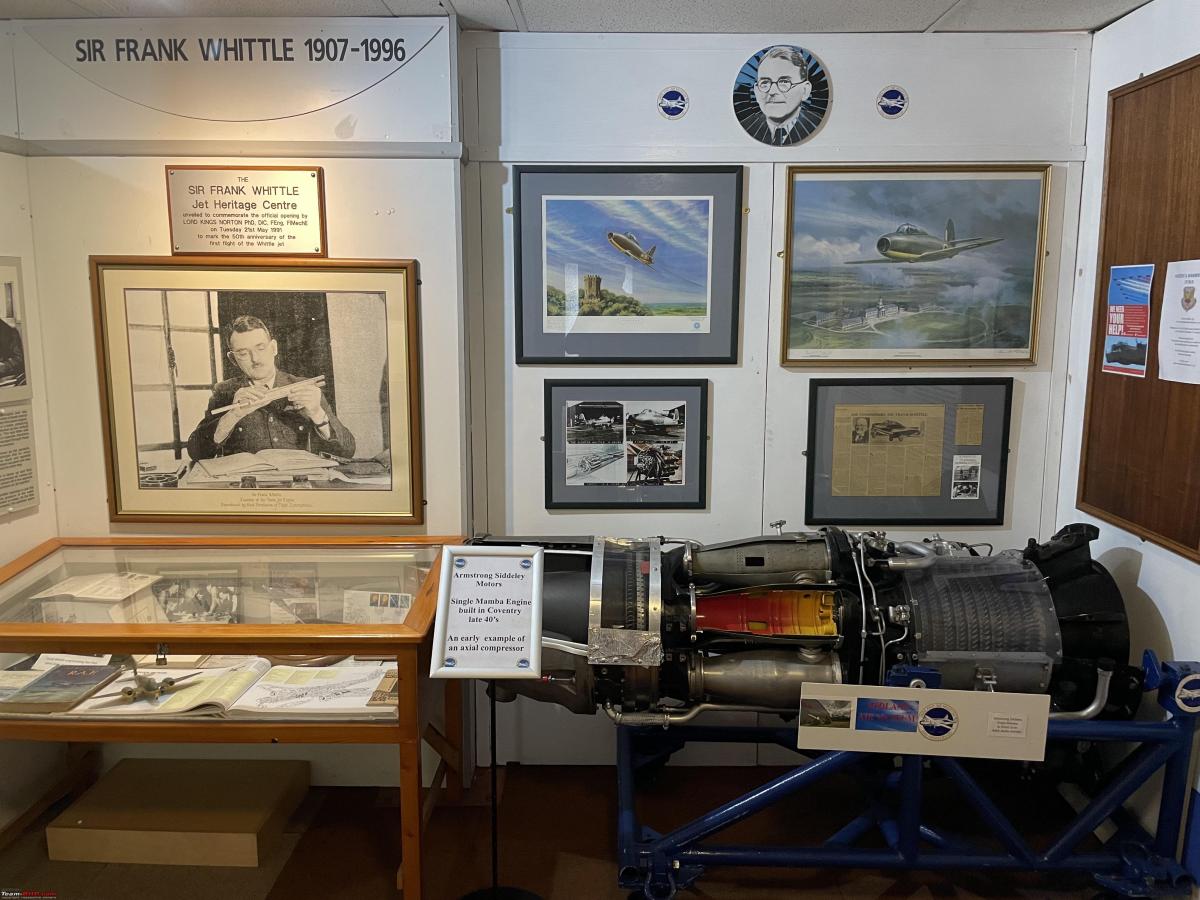
Although I knew a bit about Frank Whittle I learned quite a bit here about his career.
This image has a good summary of it.

Although the first jet-powered plane flew in 1941, the first jet engines were being tested as early as 1937. The museum is choke full of all kinds of bits and pieces of the early jet design and test days.

You can see the original test panel in this photograph. Showing Whittle and his first jet engine. Interestingly enough the RAF was initially not interested at all in the jet engine.

Here we see the W2/700 Military Centrifugal turbojet. It was used in the Gloster E.23/38, Britain's first jet aircraft and later in the early meteors.
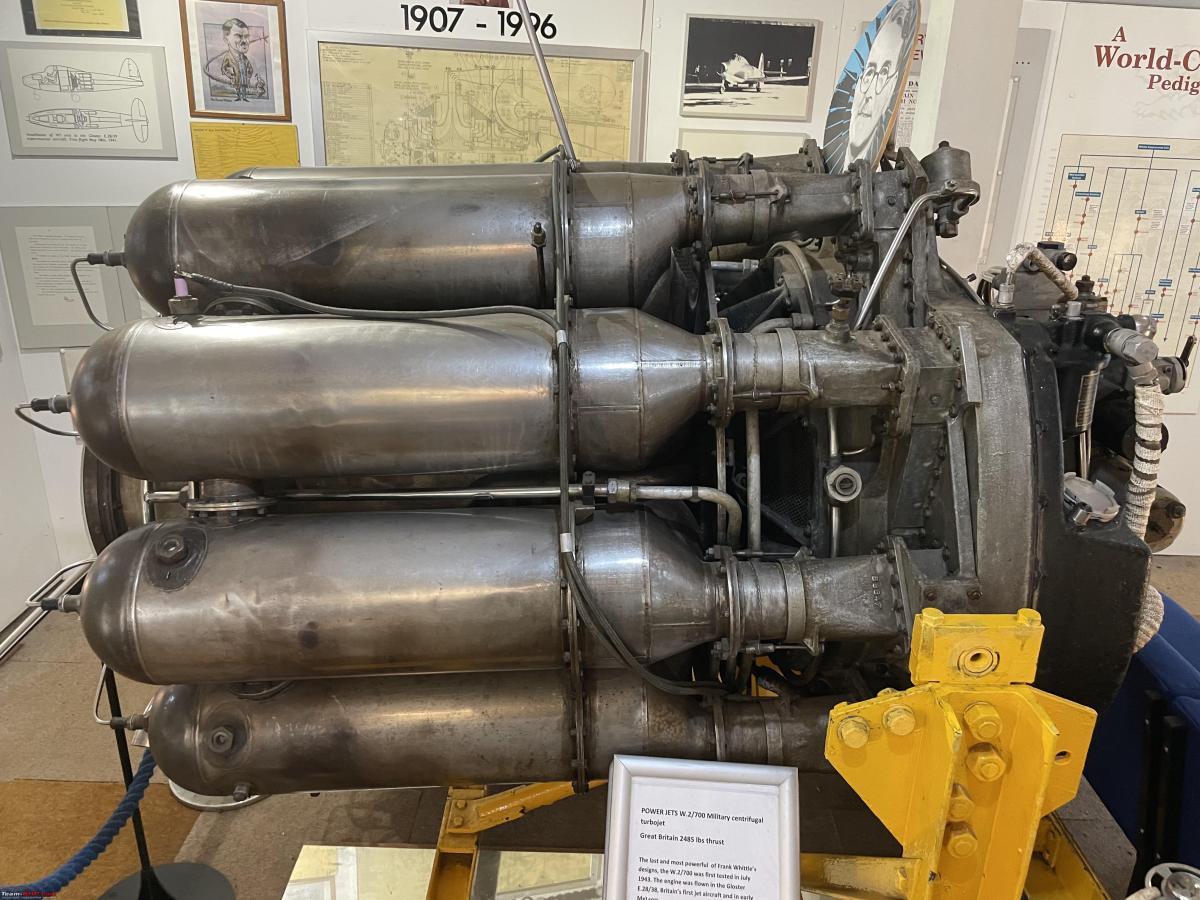
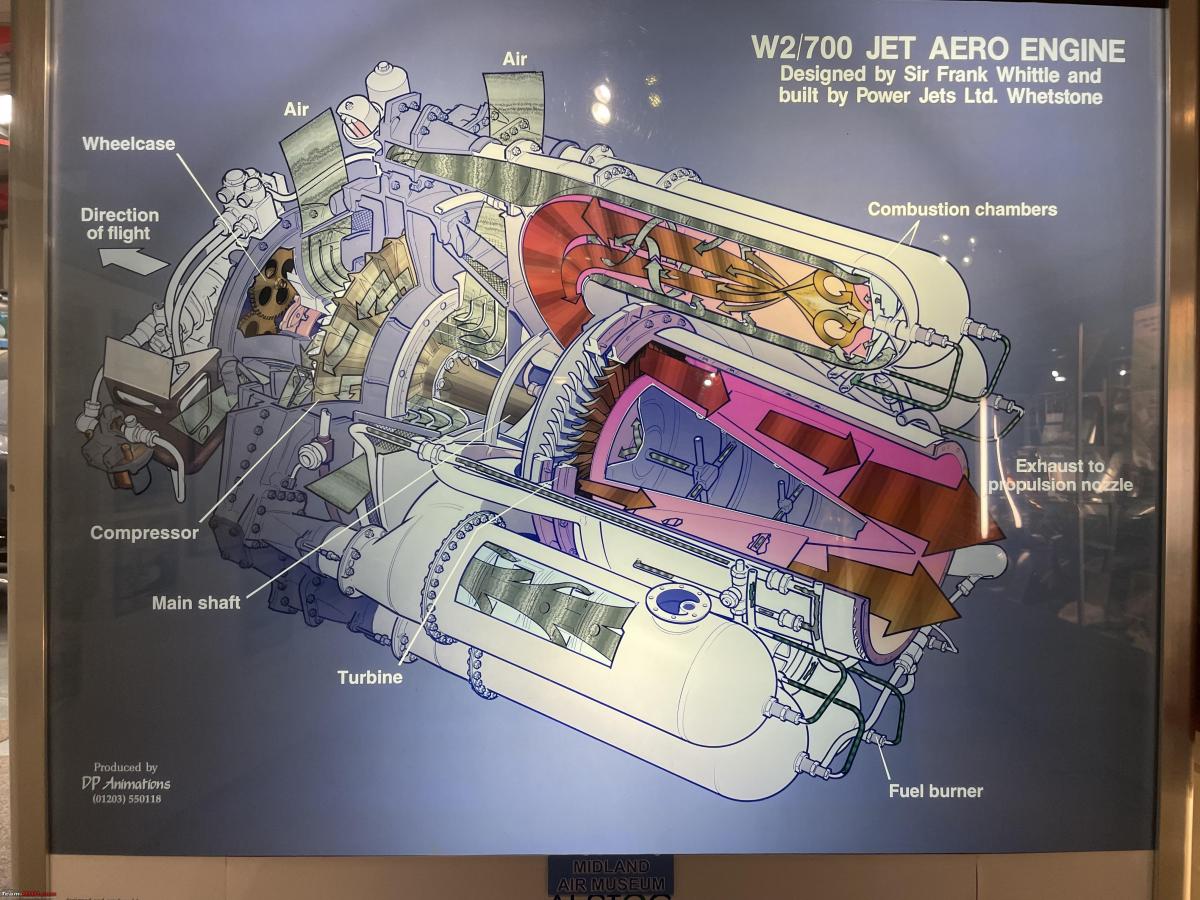
I found the below diagram very interesting. It shows how, ultimately, the aviation industry embraced the jet engine. It all started with the Whittle design and from there on, many corporations embarked on their development.

I noticed this little display. It’s a Meteor intercepting a V1 by flipping it over with its wing. The pilot ”Dixie” Dean tried to shoot it down first, but his machine guns failed to fire. He positioned himself alongside the V1 and tipped it over and out of control.

I am not sure how many V1s were successfully intercepted by this method. I once heard/read that once the Germans found out, they installed switches underneath the V1 wingtips, which would detonate the V1 bomb upon being activated. I think it was a bit of a tall story. The meteors did not become operational till mid-1944. About the same time as the V1 became operational.
Here you see the real McCoy: Gloster Meteor
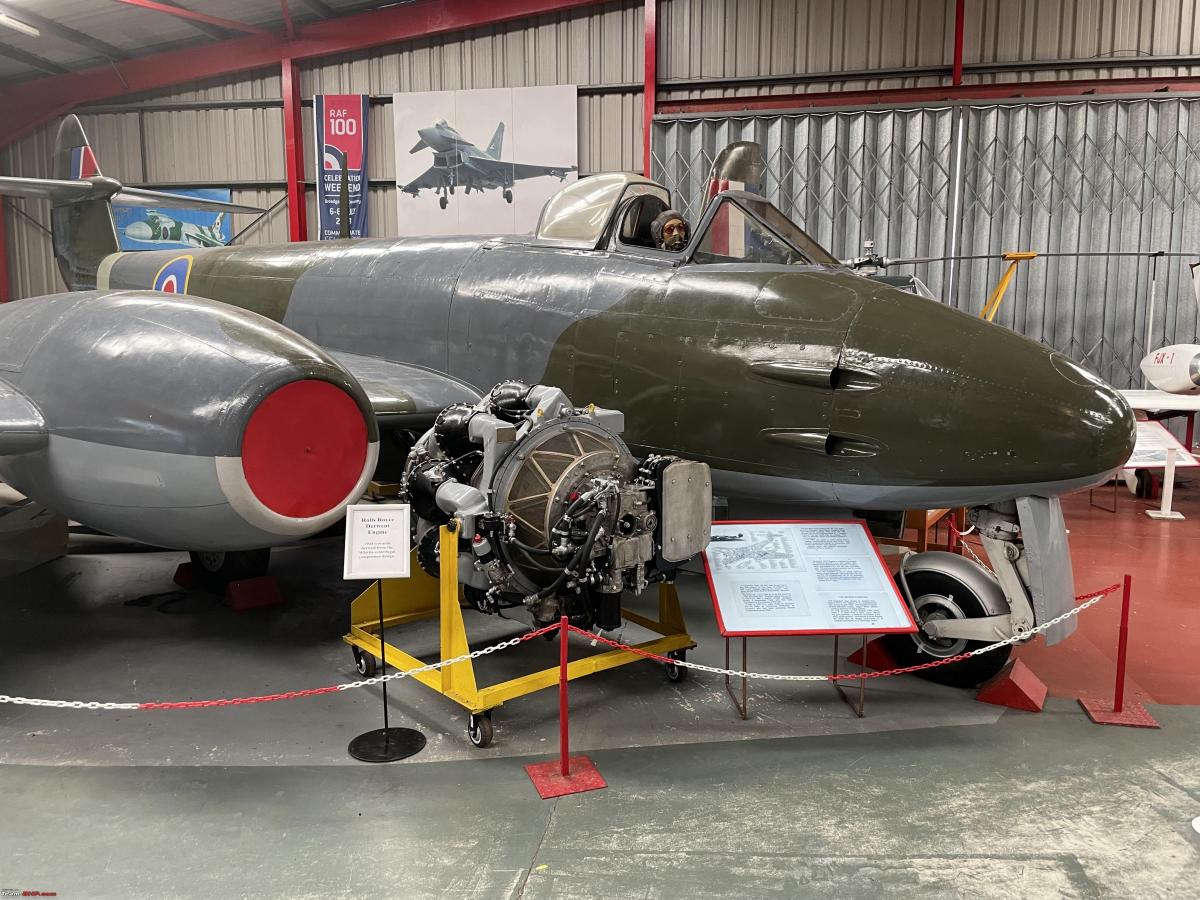
They also had an open cockpit of the Meteor for the public to sit in. Here is yours truly at the controls!!

Jet fighters are always a tight fit for somebody my size (93kg, 1.93m) But there early jet fighters are made for dwarfs. I could not even stretch my legs to get them onto the pedals!

The museum has this one main hangar with a lot of planes fitted into it and a few other buildings and lots of planes outside. But here is an overview. It gives some idea of how much stuff they have managed to put on display. You could walk around for hours and still keep discovering new things.

So let's have a look at some of the other planes on display. I have always had a bit of a soft spot for this one: The T33, derived from the P80 Shooting Star. The main difference the T33 has a two-pilot cockpit and is about a meter longer. Many young air cadets received their initial jet aircraft training on the T33. The instructor would sit behind the student pilot. He/she could fly the plane from the rear seat if necessary. This particular T33 was delivered to the French Airforce in 1952 and saw service in Morocco before being retired in 1977 with a total of 5746 flying hours.

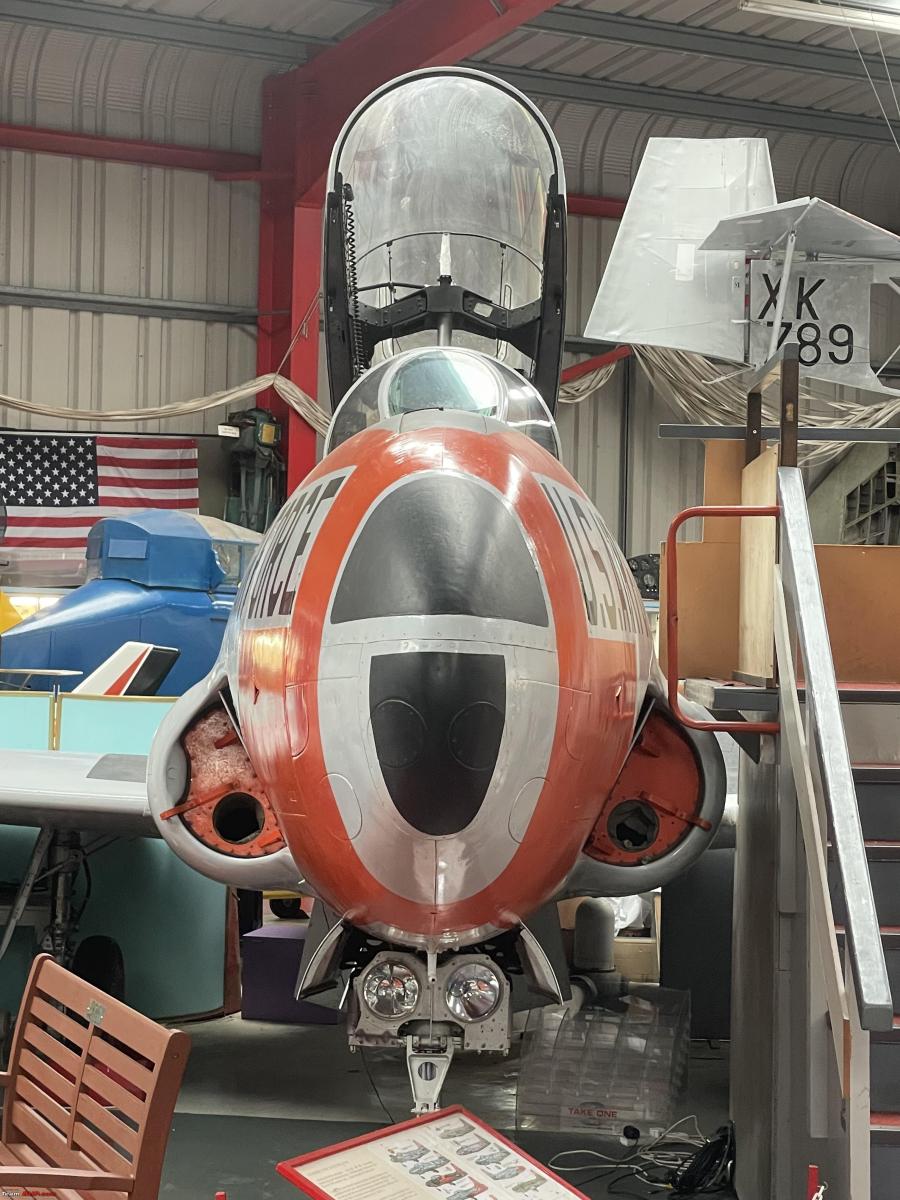
The T-33 cockpit looks marginally less cramped than the Meteor. But unfortunately, you were not allowed to sit in it.
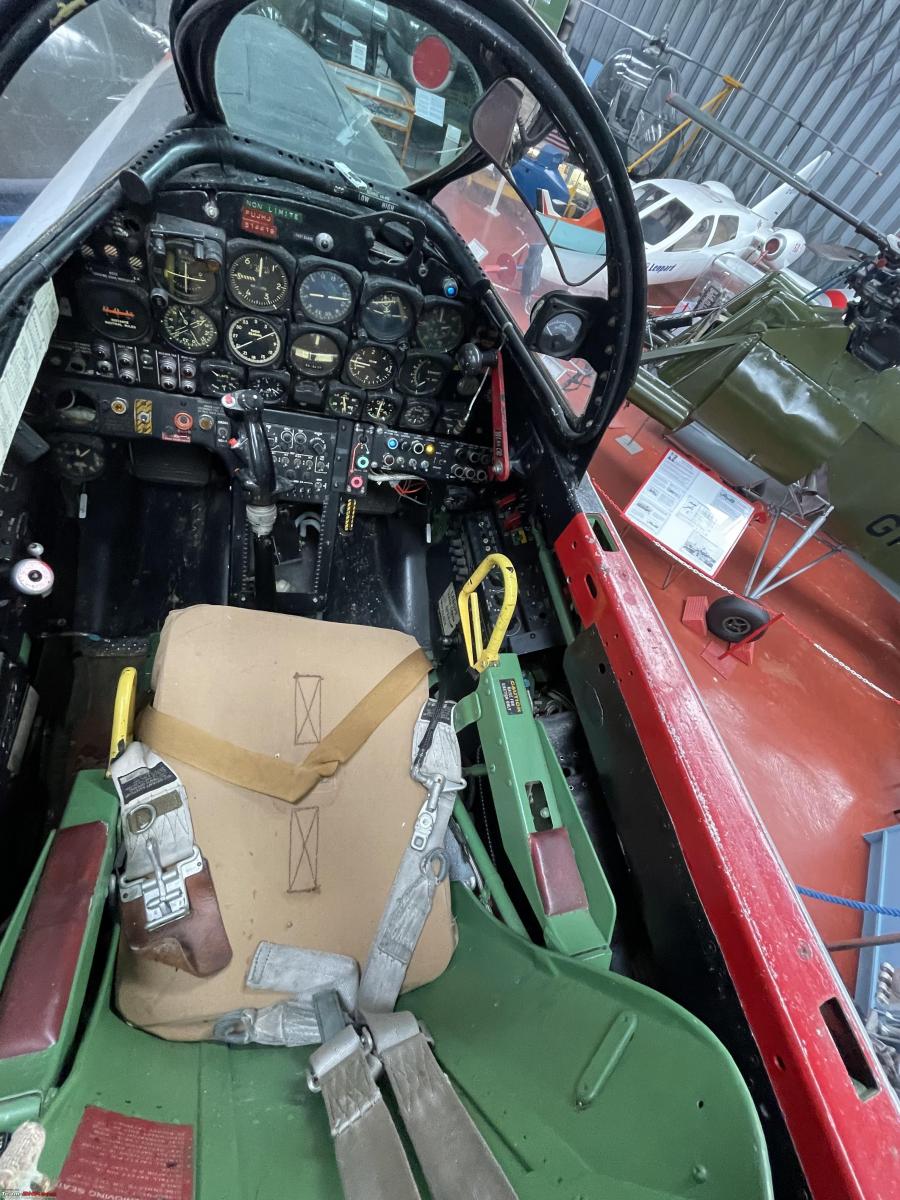
Various airforces around the world made use of the T33. It has seen some civilian use as well. Probably the most well-known is the two T33s used by Boeing as a chase plane. Being retired the two T33s chase planes in 2020, after 66 years of service!!
A Swedish Saab J29. The J29 was the first European swept-wing jet fighter to enter service. It flew with the Swedish airforce. But was also used by the UN peacekeeping force in Congo and the Australian Air Force.
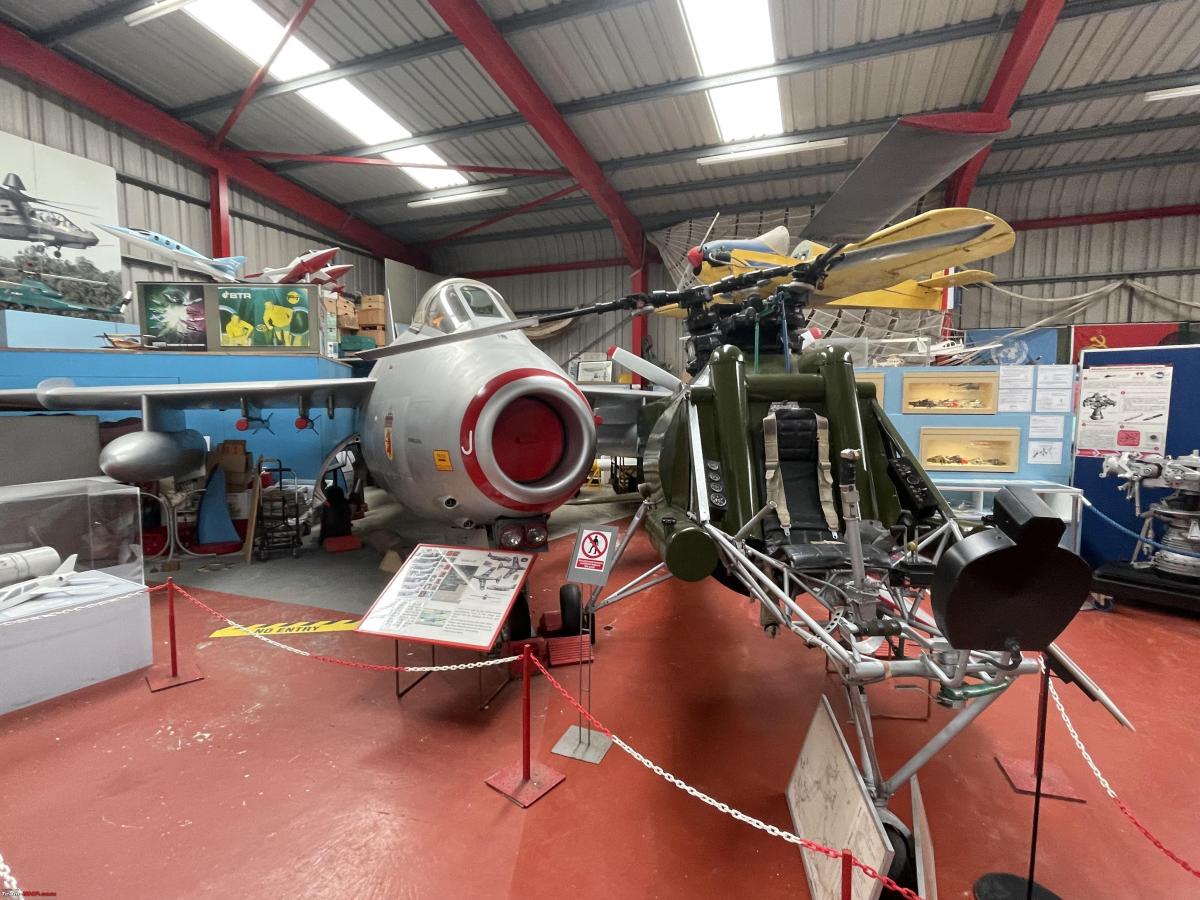
Here is a prototype of the Chichester Miles Leopard. It's a composite high-performance, 4-seat passenger aircraft. This prototype was used for the development and testing of various systems. It flew first in 1997 and made some 90 test flights. It was supposed to cruise at 500 MPH at 45000 feet. No production models were ever made.
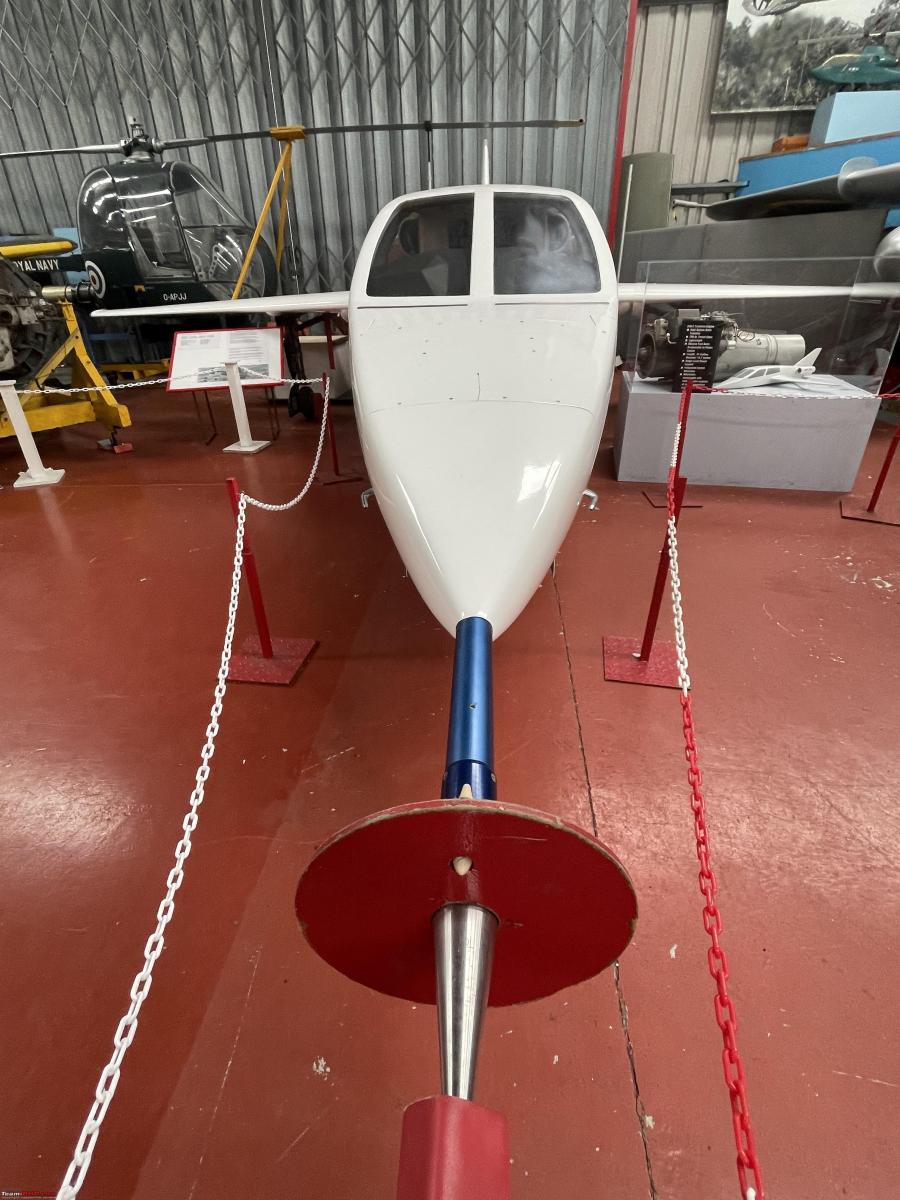
This contraption is known as the Kolibri (Hummingbird) although its official German name is a bit more formal and very German: Flettner FL282. It went operational in 1942 with the German navy (Kriegsmarine). They mounted a platform on top of a gun turret aboard the cruiser Koln. Its purpose was reconnaissance and potential light attack role. Whatever role, you had to be extremely brave to strap yourself into one of these!
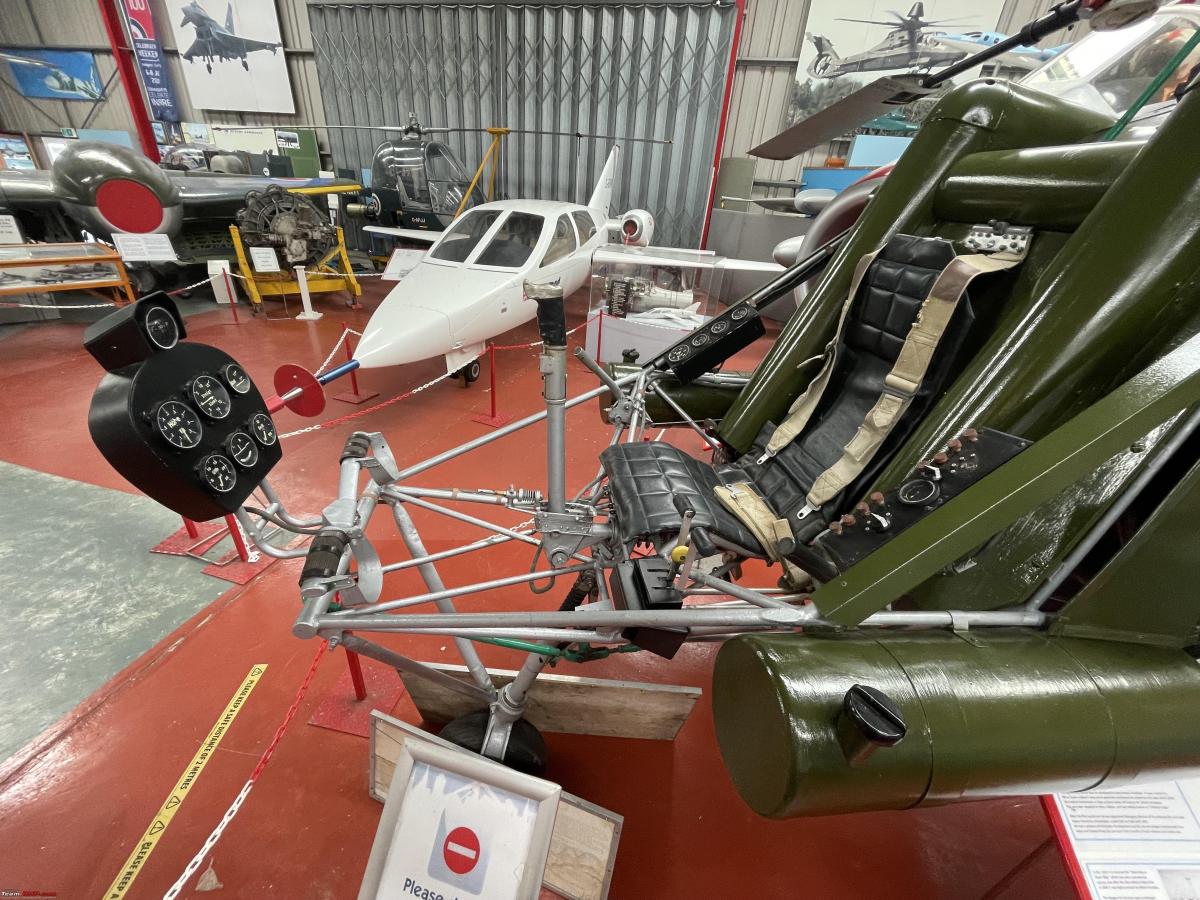
Another overview of some of the planes is discussed.

Apart from planes, there is a lot of other aviation-related stuff on display. I love looking at all of this kit. Where else would you find an automatic gyro control unit for the V-bombers?
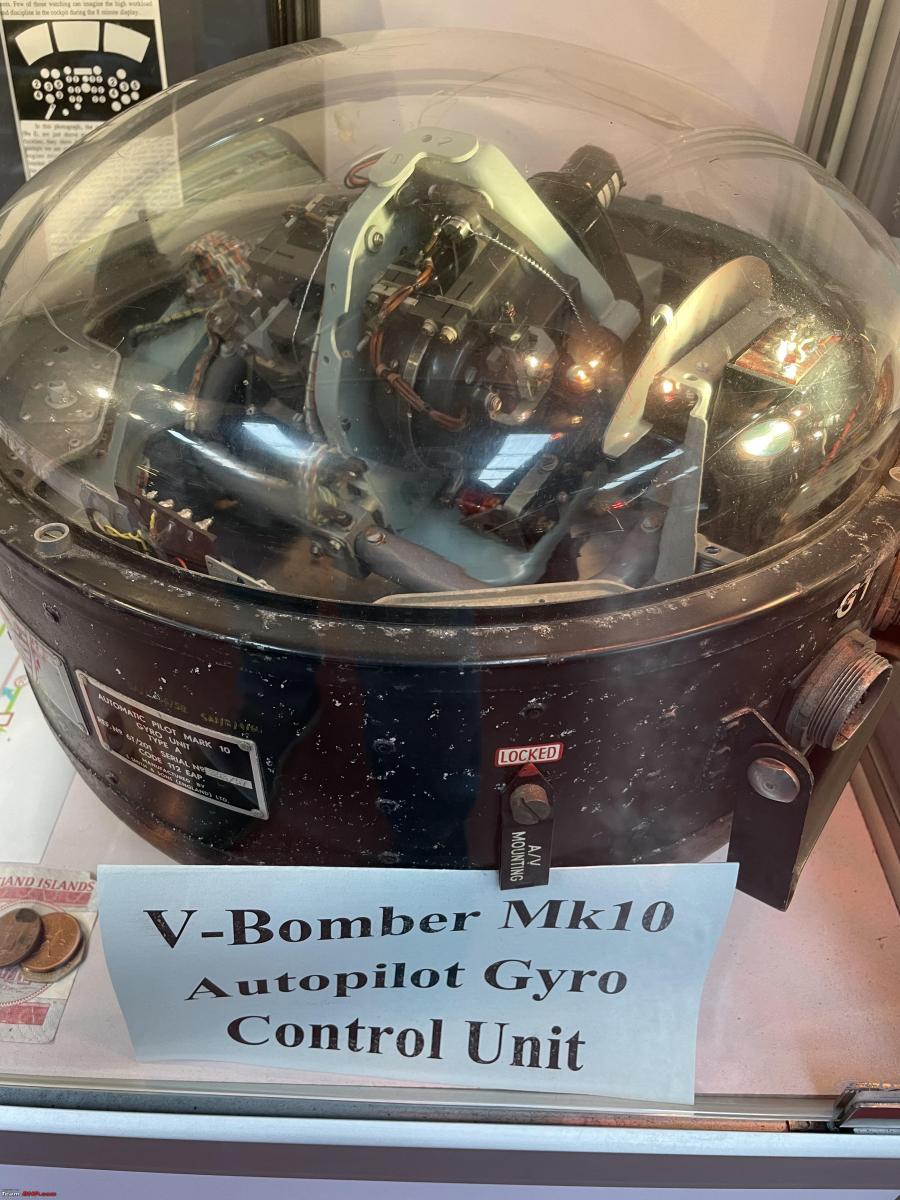
Lots of models and I will be showing a lot more. But this display was dedicated to the Tornado.
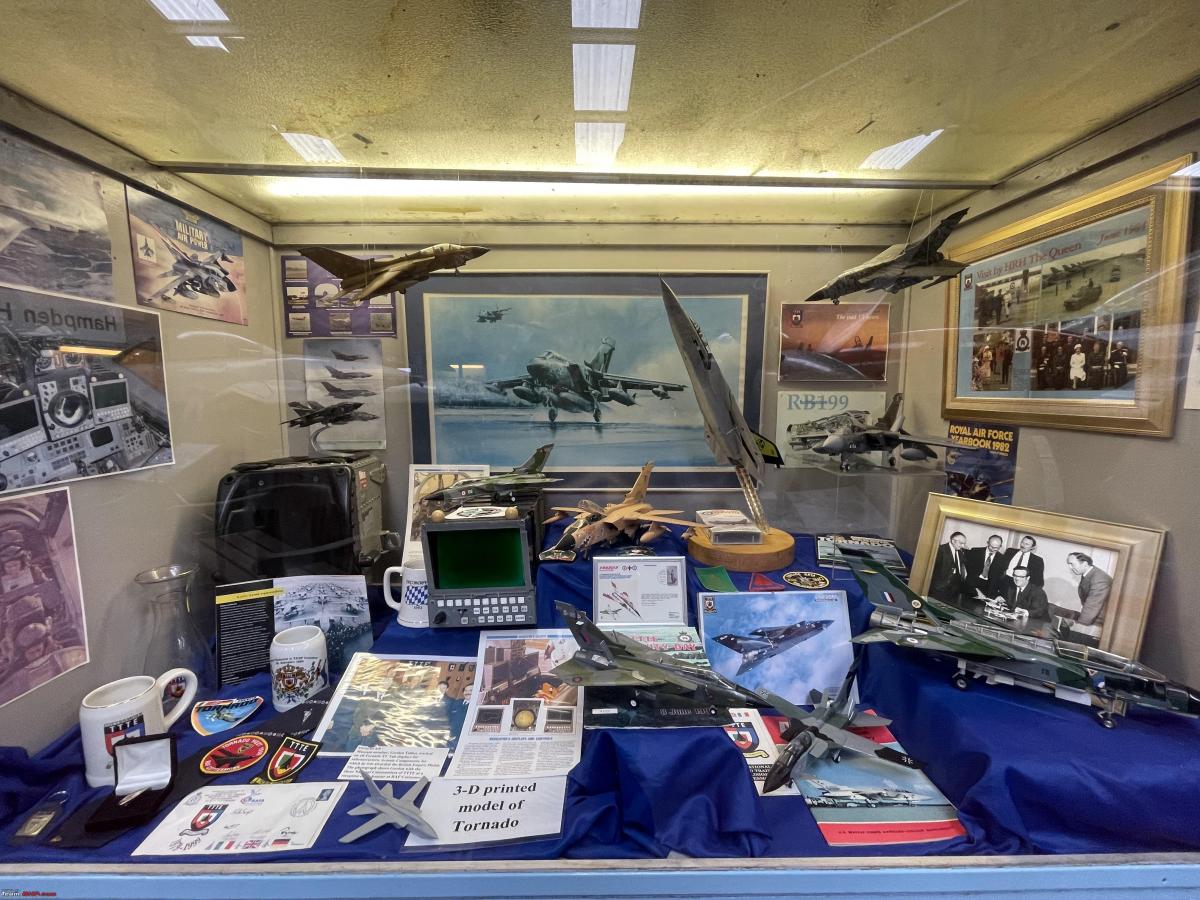
Various bits from the Tornado.

I was particularly interested in the throttle quadrant as it is known. The throttles control the thrust of the two engines. The lever on the right side allows the selection of the wing sweep. From full forward on take-off and landing position to the swept back high-speed position.
Rocking the levers to the left selects the engine thrust reverse braking. I had never seen these reverse levers in such a way. Also, I had not realised the Tornado has reversers. If you look very closely at the poster you can see them. It’s these bucket-type reverses, one is closed the other open.
The flap selection lever is on the far left side.
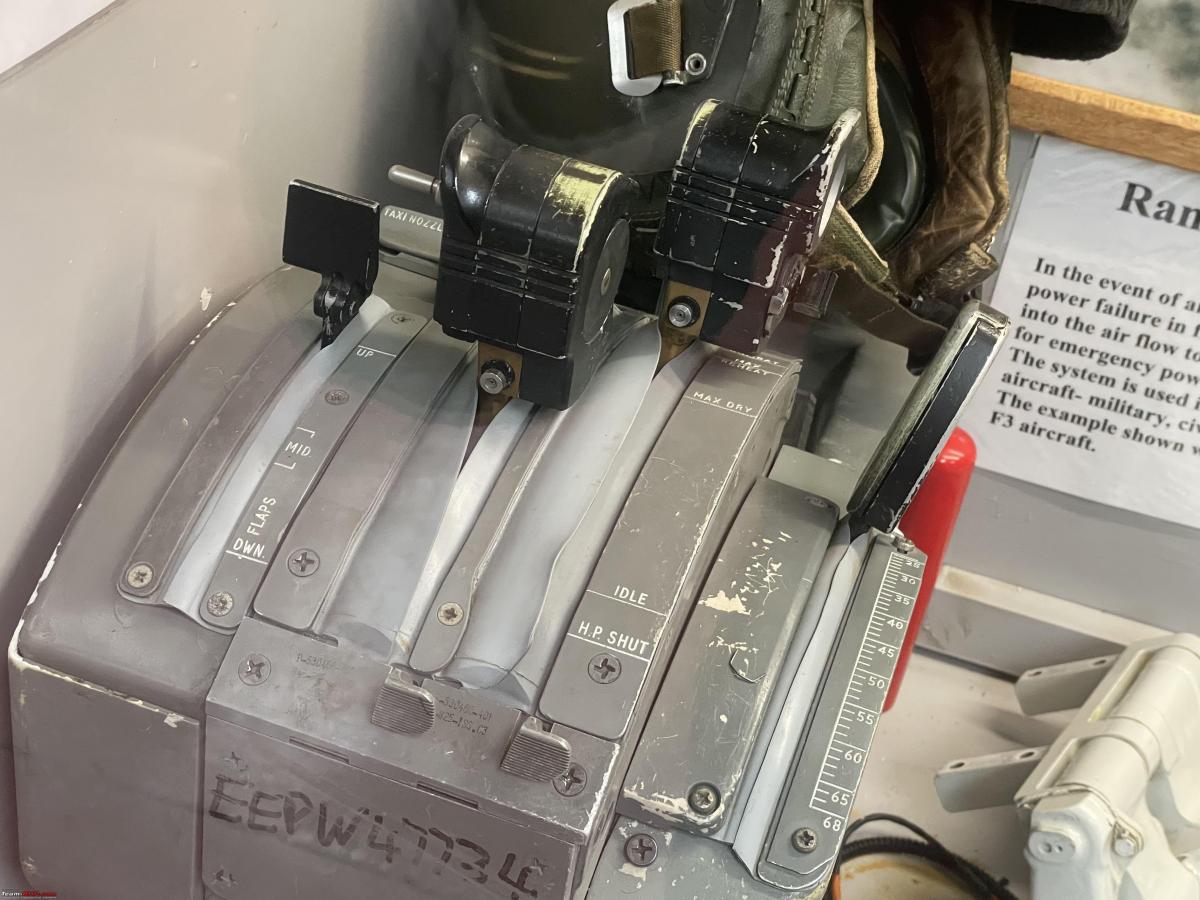
Whenever you visit a British aviation museum, in particular, one with a military kit on display you will run into various “Falkland War Displays” of course.
The plane in the middle on the top shelve is an Argentinian Super Etendard. It is not that well-known plane. I haven't come across many of them, during any of my many aviation museum visits around the world.

Continue reading BHPian Jeroen's aviation museum visit experience for more insights and information.



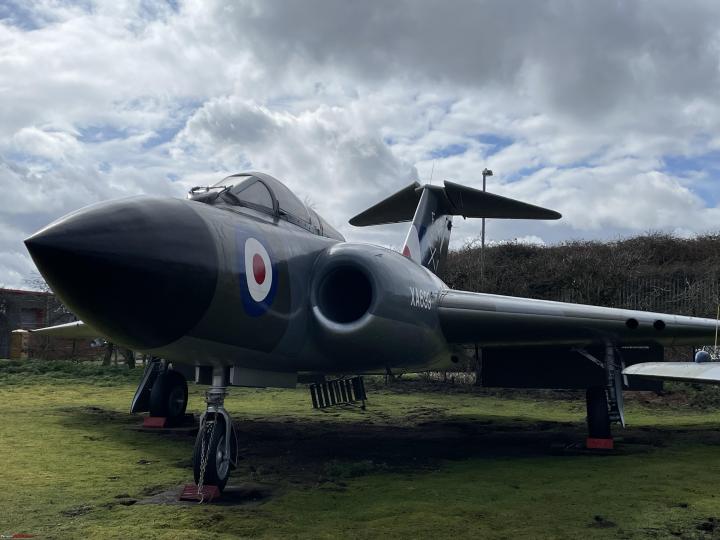
















_0_0.jpeg)



